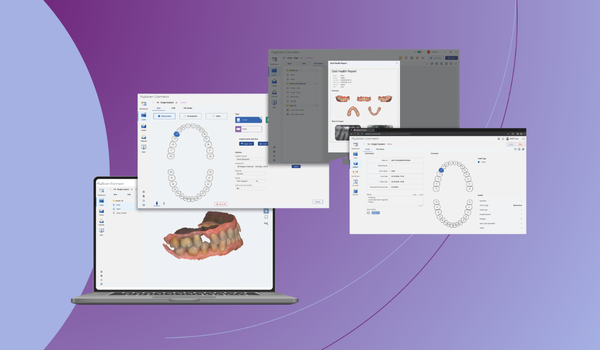Digital workflow represents a momentous change in the way modern dental practices operate.
It is not simply replacing analog instruments with digital ones, but a comprehensive integration of technologies that streamline every stage of work, from diagnosis to treatment planning to patient and laboratory communication. This approach based on connectivity and precision revolutionizes the clinical experience, making it more efficient, safe, and predictable. Digitization makes it possible to overcome the limitations of traditional methods, reducing human error, optimizing time, and providing a significantly more comfortable and transparent patient experience. It is a true technological ecosystem working in perfect sync for the benefit of the practitioner and the patient.
According to a global market analysis conducted by MarketsandMarkets in their Digital Dentistry Market Report, the digital dentistry market is growing rapidly. Starting with a value of $7.2 billion in 2023, it is estimated to reach $12.2 billion by 2028. This is a steady growth trend, averaging more than 10 percent annually, which is driven by several factors. Digital technologies offer high return on investment (ROI), allow same-day treatments to be completed, reducing stress for patients and dentists, and are increasingly cost-effective. Also driving the market is the increase in aesthetic procedures and more visits worldwide. Despite the challenges, the evolution of the industry is unstoppable and testifies to how the benefits far outweigh the risks, making digital the winning choice for the future.
A practical example: the case of dental implantation
The true potential of the digital workflow manifests itself in the most complex cases, such as implant placement. The process, managed with MyRay technology, unfolds in smooth, interconnected steps:
- Diagnosis and data acquisition
It starts with a 3D radiographic investigation using the latest CBCT launched on the market, ProXIma X6. This examination provides a detailed volumetric model of the patient's maxilla, which is essential for analyzing bone quality and quantity. Added to this is the intraoral scan, acquired with MyScan WL or MyScan WR, which create a three-dimensional optical impression of the dental arch, eliminating the need for traditional impressions. - Virtual planning and integration
DICOM (CBCT) and STL (intraoral scanner) data are merged in Neowise. Here, the practitioner can virtually plan the ideal implant position, considering anatomical structures, bone density, and the final prosthetic outcome. - Sharing and collaboration
Once the planning is completed, the digital file can be shared instantly. This allows the dentist to collaborate in real time with the dental laboratory and show the patient a clear and detailed preview of the proposed treatment. - Performing the surgery and prosthetic phase
With surgical guidance, the surgery becomes less invasive and faster. Healing times are optimized, and the prosthetic phase, which is also digitally managed, can be proceeded with to create a prosthesis that fits the patient perfectly.
This integrated and intuitive system not only optimizes labor time, but also makes the process safer and more predictable, elevating service quality and patient satisfaction. With MyRay, the future is already a reality.
-1.png)

.png)



.png?width=352&name=MYRAY%20NEWS%20%20(3).png)